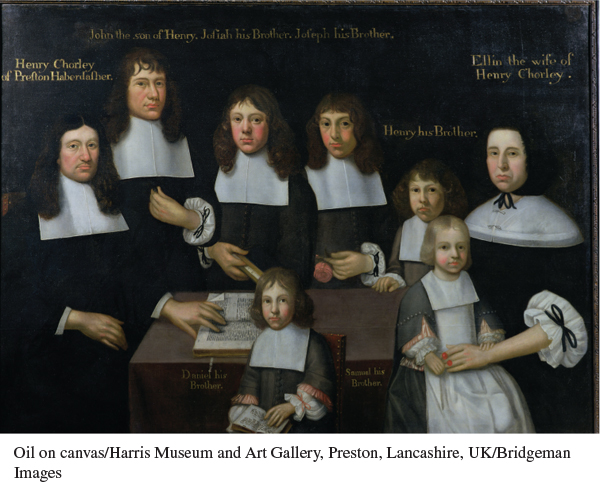A History of Western Society: Printed Page 494
A History of Western Society, Value Edition: Printed Page 479
A History of Western Society, Concise Edition: Printed Page 495
The Puritan Protectorate
With the execution of Charles, kingship was abolished. The question remained of how the country would be governed. One answer was provided by philosopher Thomas Hobbes (1588–1679). Hobbes held a pessimistic view of human nature and believed that, left to themselves, humans would compete violently for power and wealth. The only solution, as he outlined in his 1651 treatise Leviathan, was a social contract in which all members of society placed themselves under the absolute rule of the sovereign, who would maintain peace and order. Hobbes imagined society as a human body in which the monarch served as head and individual subjects together made up the body. Just as the body cannot sever its own head, so Hobbes believed that society could not, having accepted the contract, rise up against its king.
Hobbes’s longing for a benevolent absolute monarch was not widely shared in England. Instead, Oliver Cromwell and his supporters enshrined a commonwealth, or republican government, known as the Protectorate. Theoretically, legislative power rested in the surviving members of Parliament, and executive power was lodged in a council of state. In fact, the army controlled the government, and Oliver Cromwell controlled the army, ruling what was essentially a military dictatorship.
The army prepared a constitution, the Instrument of Government (1653), that invested executive power in a lord protector (Cromwell) and a council of state. It provided for triennial parliaments and gave Parliament the sole power to raise taxes. But after repeated disputes, Cromwell dismissed Parliament in 1655, and the instrument was never formally endorsed. Cromwell continued the standing army and proclaimed quasi-
On the issue of religion, Cromwell favored some degree of toleration, and the Instrument of Government gave all Christians except Roman Catholics the right to practice their faith. Cromwell had long associated Catholicism in Ireland with sedition and heresy, and led an army there to reconquer the country in August 1649. One month later, his forces crushed a rebellion at Drogheda and massacred the garrison. After Cromwell’s departure for England, atrocities worsened. The English banned Catholicism in Ireland, executed priests, and confiscated land from Catholics for English and Scottish settlers. These brutal acts left a legacy of Irish hatred for England.
Cromwell adopted mercantilist policies similar to those of absolutist France. He enforced a Navigation Act (1651) requiring that English goods be transported on English ships. The act was a great boost to the development of an English merchant marine and brought about a short but successful war with the commercially threatened Dutch. While mercantilist legislation ultimately benefited English commerce, for ordinary people the turmoil of foreign war only added to the harsh conditions of life induced by years of civil war. Cromwell also welcomed the immigration of Jews because of their skills in business, and they began to return to England after four centuries of absence.
The Protectorate collapsed when Cromwell died in 1658 and his ineffectual son succeeded him. Fed up with military rule, the English longed for a return to civilian government and, with it, common law and social stability. By 1660 they were ready to restore the monarchy.
